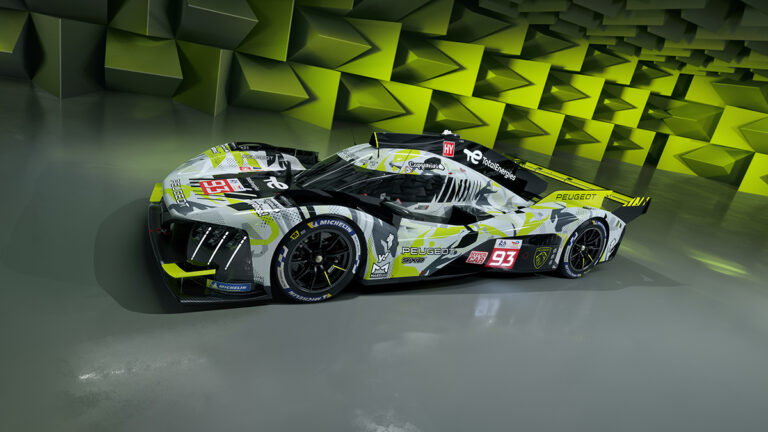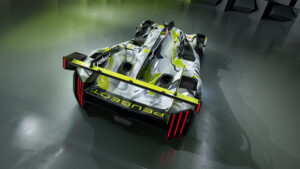There can be no denying that of all the Le Mans Hypercar constructors, Peugeot was the one that nailed the brief when it came to the aesthetics of its 9X8, not least with its bold decision to forego a rear wing. As detailed here, Peugeot felt it could hit the aerodynamic targets set by the BoP (balance of performance) without the need for one.
Sadly, that was not quite the case and through its 18-months of competition the 9X8 has struggled to achieve consistent performance from track to track, hinting at too narrow an adjustment window. At the same time, the BoP calculations have not worked in its favor, particularly when it comes to the team’s choice of using equally sized tires on all four corners. Speaking at the car’s race debut back at Monza in 2022, technical director Oliver Jansonnie noted that the car was designed from the outset to run equally sized tires all around (31/71 x 18), as was specified by the rules for hybrid cars when Peugeot commenced work on the project. The entire concept therefore centered around making these tires work, which he said requires a near 50:50 weight distribution. However, the rules were later changed to allow 29/71 front and 34/71 rear tires, which Toyota took advantage of with its reworked GR010 in 2022. Clearly, the use of a larger rear tire benefits both grip and wear over a stint.
Balance-of-performance woes
For Peugeot, the change came too late. “We would have had to redo everything, and we wondered for some time whether we should accept a delay in the project and start over again,” Jansonnie recalled. In the end, the car maker stuck with the previous tire specification and Jansonnie said it was assured that performance would be balanced regardless of tire size, saying, “We are all in the same boat and we have to make it work.”
Ultimately, the deck did not fall in Peugeot’s favor. Commenting on the revamped 2024 car, Jansonnie said. “We made choices that are no longer the right ones now and this difference in performance was not sufficiently offset by the BoP (balance of performance) in 2023.
“The idea was therefore to go back to a car design that is similar to that of our rivals’ car designs, so that it would then be given equivalent treatment by the BoP. This is why we decided to drop the use of identical 31/31cm tire widths on all the wheels, choosing to fit 29cm tires at the front and 34cm tires at the rear. Strictly speaking, it’s not a new car, as it has the same chassis, but there are a lot of upgrades.”
The change in tire affects the entire philosophy, not least requiring a different aero balance. “For the tires to work effectively, we had to alter the center of gravity of the Peugeot 9X8, which meant moving certain components and working to make others lighter. And in order to have a better aerodynamic balance, we also had to look at redistributing the aerodynamic loads, which resulted in us redesigning approximately 90% of the bodywork components, most notably adding the rear wing. As well as all this, we decided to use this new homologation to add some reliability and performance upgrades to give us the best opportunities in the championship.”
The new 9X8 will make its racing debut at the next round of the World Endurance Championship at Imola in April.






